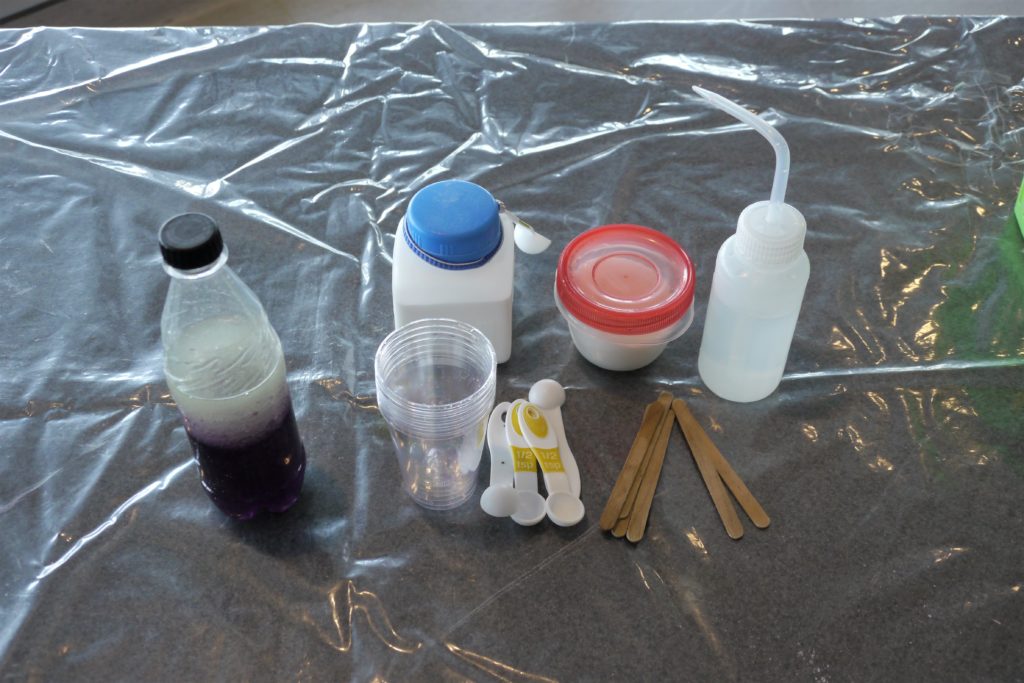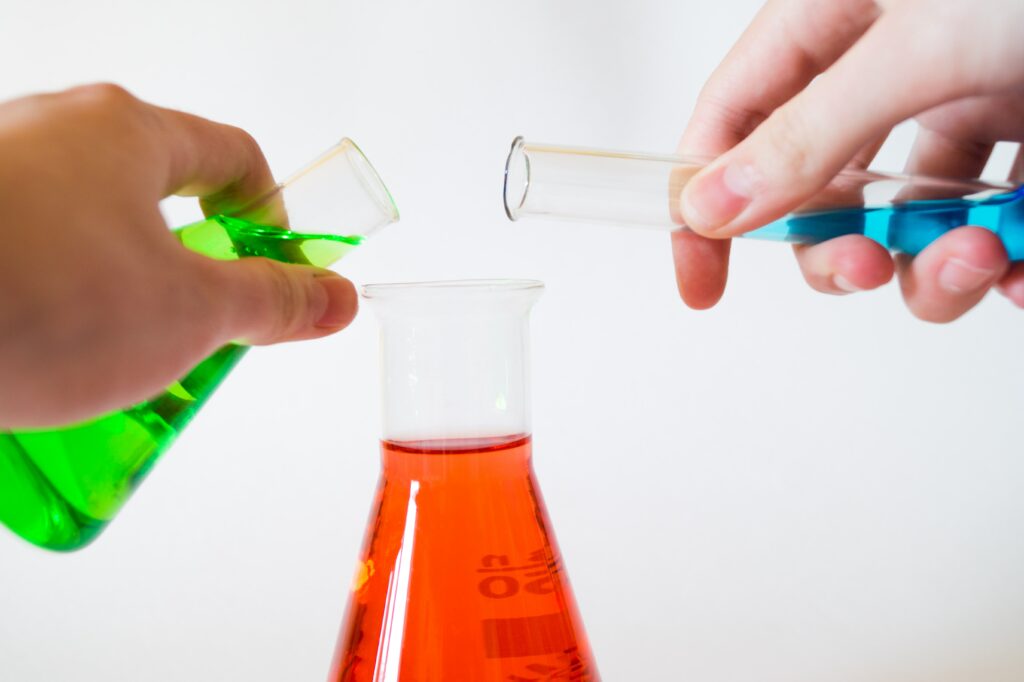Objectives
-
Describe in general terms what occurs during a polymerization reaction.
-
Explain what is meant by absorbency.
-
Name some practical uses for absorbent polymers.
-
Investigate the properties of common polymers.
Materials
Background
Many of the modern products we take for granted are polymers. Although many people think of plastics when they hear the word polymer, polymers can be synthetic or natural products. Synthetic polymers include formica (e.g. counter tops), nylon, polyester, rayon, polystyrene (Styrofoam), polyurethane and Teflon (e.g. non-stick frying pans). Natural polymers include proteins, like silk, made from molecules of amino acids.
Polymer is a fancy word with a straightforward meaning: “poly–” means “many” and “–mer” means “part” or “segment”. A polymer is a large molecule made of repeating units, usually connected by covalent chemical bonds. “Mono–” means “one” and monomers are the small molecules that can join together to make a long polymer chain. (Note: only those molecules that can join together to make a long polymer chain get the label of monomer.)
To understand how polymers are formed, it helps to start with an understanding of molecules. Molecules are made up of atoms, which are the basic building blocks of matter. For example two hydrogen atoms (H) can join with an oxygen atom (O) to form a water molecule (H2O). Molecules can be very complex. For example, glucose is made of 24 atoms (6 carbons, 12 hydrogens, and 6 oxygens or C6H12O6) attached in a certain order. If the atoms were rearranged in a different order, it would no longer be glucose. Glucose is an example of a monomer because glucose molecules can be joined together to create polymers called polysaccharides such as glycogen and cellulose.
A linear polymer is made up of one molecule after another hooked together in a long chain to create a backbone. This polymer doesn’t have to be perfectly straight. “Linear” means that you can trace the path from one end of the polymer to the other. The bonds between atoms in the backbone can swivel and bend. A bunch of paper clips hooked together end to end is a simple model of a linear polymer.
A branched polymer has extra lines (branches) in the chain so there are lots of endings. No matter where you start, you can’t trace the entire polymer without backtracking.
The properties of the polymers depend on the type of atoms in their repeating units, and on how the atoms and molecules are connected. Some polymers are rubbery, some are sticky and gooey, and some are hard. Because polymers can be almost any shape or consistency they are used to create lots of different things. Most polymers will last a long time. That’s good when they are used for clothes and furniture but it is bad when polymers get thrown away. It’s important to recycle the polymers that we can, like drink bottles, so that our landfills don’t get filled up so fast.
Vocabulary
polymer: A large molecule made up of many repeating units or parts.
monomer: A simple molecule that can join with others to make polymers.
absorbent: Having a capacity or tendency to soak up liquids.
Other Resources
The University of Southern Mississippi | Make a Virtual Polymer!

